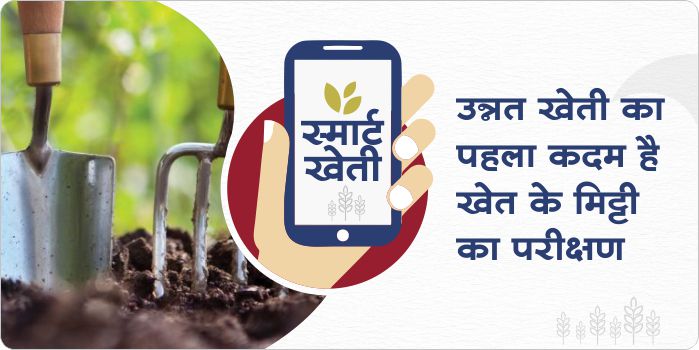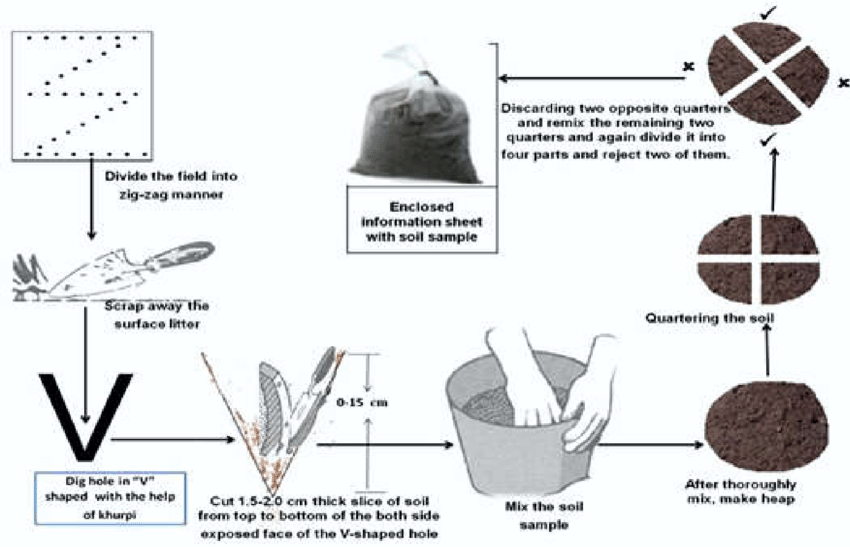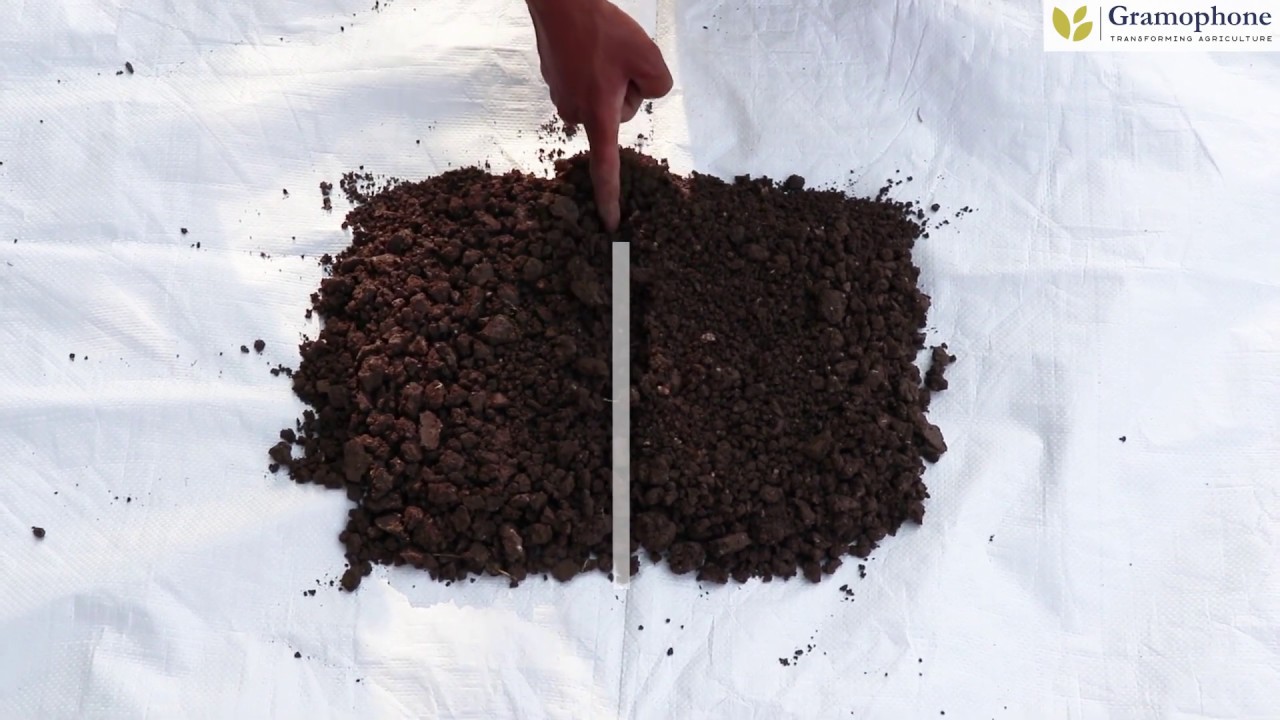- Do not take samples from the land under the tree, from the meds or the low places, where there is a pile of manure, or where water gets collected.
- For soil testing, take the sample in such a way that it represents the entire field, at least 500 grams of the sample must be taken.
- Remove organic materials such as crop residue, dry leaves, stalks and grasses etc. from the top surface of the soil and choose samples from 8-10 different locations according to the area of the field.
- Soil sampling should be done from the depth at which the root crop is taken.
- Soil samples should be collected in a clean bucket or tagari etc.
- Make sure to label the sample precisely.
Know what are the benefits of Soil Testing
- Soil testing can accurately detect the elements present in the soil. After their information, the available nutrients in the soil are found and accordingly the quantity of manure and fertilizer is recommended.
- That is, after soil testing, by giving a balanced amount of fertilizer, more benefit can be taken in farming and fertilizer cost can be reduced.
- Soil testing can detect soil pH, dissolved conductivity, organic carbon as well as major nutrients and micronutrients.
- The normal, acidic or alkaline nature of soil can be ascertained from soil pH value. Soil pH decreasing or increasing affects the growth of plants.
- Soil pH After finding out, suitable crop varieties are recommended in problem prone areas which have the ability to tolerate acidification and alkalinity.
- Soil pH between values 6.5 to 7.5 Nutrients are most commonly consumed by plants, and lime for acidic soil and gypsum for alkaline soil is recommended.
- Electrical conductivity can be known by soil testing, this gives information about the level of concentration or quantity of salts in the soil.
- Due to high concentration of salts in the soil, there is difficulty in absorption of nutrients by the plants.
- Soil testing can determine the fertility of the soil by testing organic carbon.
- The physical properties of soil such as soil structure, water holding capacity, etc. are increased by organic carbon.
- Organic carbon also prevents the leaching of nutrients.
- In addition, organic carbon is also very useful for the availability, transfer and conversion of nutrients and growth of microorganisms.
- Depending on the fertility of the soil, it helps to implement agricultural production and other useful schemes.
- Therefore, all these information shows how important soil testing is.
Process of taking sample for soil testing
- For soil testing, the sample should be taken in such a way that it represents the complete area or field. At least 500 grams of the sample must be taken for soil testing.
- Remove organic materials such as twigs, dry leaves, stalks and grasses etc. from the top surface of the soil, and choose samples from 8-10 locations according to the area of the field.
- At selected locations, make a V-shaped hole of around 10-15 cm in shallow root crops and 25-30 cm depth for deep root crops.
- Then cut a uniform layer of soil of about one-inch thickness and collect it.
- Similarly, take samples from other parts of farms too. Now mix this samples of soil and divide it into four parts.
- Now remove two facing parts from this sample as shown in the image, and make a pile of the remaining part. Keep repeating the same process until you are left with only half kilogram of soil sample.
- Put this soil sample in polyethene and label it.
- For labelling, write the name of the farmer, location of the field, date of soil sampling and the name of the previous, present crop as well as the crop you are planning to sow next.
Please watch this video for more information about soil sampling –
ShareWhat information could be obtained by soil testing?
The following facts can be determined from soil testing –
- Soil PH
- Electronic conductivity (Concentrations of salts)
- Organic Carbon
- Available Nitrogen
- Available Phosphorus
- Available Potash
- Available Calcium
- Available Zinc
- Available Boron
- Available Sulphur
- Available Iron
- Available Manganese
- Available Copper
By knowing the number of nutrients available in the soil, we can adjust the quantity of fertilizers accordingly. This would increase the productivity of the crop and reduce the cost of cultivation.
ShareImportance of Soil testing in farming
Soil testing is very necessary for increasing production of any crop. It helps in –
- Determining the exact amount of chemical fertilizers used in crops.
- In identifying the correct way of improving the alkalic and acidic land and making it fertile.
- To determine the compatibility of the land for cultivation.




